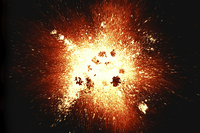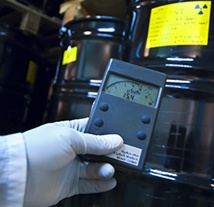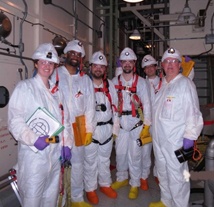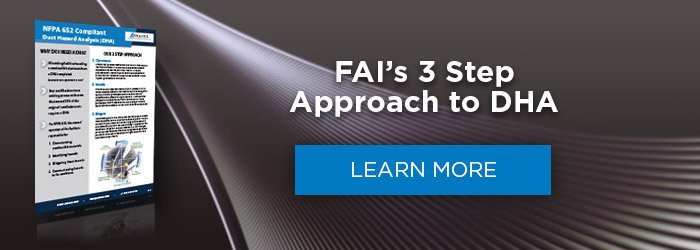When thinking about dust hazards within your facility, the first thought is typically: “Is my dust an explosible hazard?” Even though that is a great question to investigate, another question to ask should be: “Is my dust a fire hazard?” Depending on the answer to this question, your dust may fall into the flammable solids category for identification.
According to BusinessDictionary.com, a flammable solid is "any solid, other than an explosive or blasting agent, that can catch fire in the following ways:
-
through friction
-
via absorption of moisture
-
a spontaneous chemical change
-
through heat retained from a manufacturing or other process, or
-
that which can be ignited easily and, when ignited, burns so vigorously or persistently as to create a serious fire hazard.”
Further, HAZMAT (Hazardous Materials) Class 4 Flammable Solids describes flammable solids as “any materials in the solid phase of matter that can readily undergo combustion in the presence of source of an ignition under standard circumstances, i.e. without:
-
Artificially changing variables such as pressure or density; or
-
Adding accelerants”
So, what is a solid exactly? While we might think of wood as a solid, for example, so are its many constituent fibers. Medications are a solid as are the particles making up each pill. Powder based makeup is made up of many particles before it is packaged. Before you eat your morning cereal, your “crunchios” were once solid dusts capable of combustion. Other industries with flammable dust solids: plastics/polymers, manufacturing, agriculture and petrochemical.

The Class 4 Division 4.1 – Flammable Solids Test is often referred to as the “UN 4.1 - Burn Rate Test”. This test was designed to distinguish between materials that will barely ignite when an ignition source is present and those that will burn very rapidly. This information is important when characterizing your material.
The video attached is an example of a Class 4 Division 4.1: Flammable Solid – Packing Group II. This means that the flame has traveled the entire length of the powder train in less than 45 seconds and has passed the wet zone. The test is also used by OSHA and the EPA [as described in Method 1030] to establish the combustibility/ignitability of a material for regulatory purposes dealing with employee safety and waste disposal safety.
The test method is fairly straightforward and provides semi-quantitative data (burning rate and burning time) that can be used to qualify a material’s hazard class. This test is used by the US Department of Transport [DOT] for rules governing ground transportation of hazardous chemicals; but it is also used in the Dangerous Goods Regulations [DGR] established by the International Air Transport Association [IATA] and in the International Maritime Dangerous Goods Code [IMDG Code] establish by the International Maritime Organization [IMO] for safe air and sea transport, respectively.
For more information on this subject, the Burn Rate Test, a simple Go/No-Go test (simple screening test to see if you need more) and combustible dust, please visit www.fauske.com











